
From left to right: Kiril Streletzky, Nolan Holland, Jessica Bickel, Miron Kaufman, Petru Fodor, Andrew Resnick, Chris Wirth, Geyou Ao, Not Pictured: Chandra Kothapalli. Not Pictured: Jorge Gatica, Shawn Ryan, Sebastian Sensale-Rodriguez, and Mike Hore.
 Dr. Geyou Ao is an Associate Professor in the Department of Chemical & Biomedical Engineering at Cleveland State University (CSU). She received her Ph.D. in Chemical Engineering from Auburn University. Prior to joining CSU, she was a National Research Council (NRC) Postdoctoral Fellow in the Materials Science and Engineering Division at the National Institute of Standards and Technology (NIST). Dr. Ao’s lab research focuses on the structure-property relationship of nanomaterials and developing multifunctional nanomaterial applications, including optical nanosensors, thermal management materials, high performance fibers, and antibacterial coatings. Her research is funded by multiple state and federal grants, including the NSF CAREER Award.
Dr. Geyou Ao is an Associate Professor in the Department of Chemical & Biomedical Engineering at Cleveland State University (CSU). She received her Ph.D. in Chemical Engineering from Auburn University. Prior to joining CSU, she was a National Research Council (NRC) Postdoctoral Fellow in the Materials Science and Engineering Division at the National Institute of Standards and Technology (NIST). Dr. Ao’s lab research focuses on the structure-property relationship of nanomaterials and developing multifunctional nanomaterial applications, including optical nanosensors, thermal management materials, high performance fibers, and antibacterial coatings. Her research is funded by multiple state and federal grants, including the NSF CAREER Award.
Lab website: https://academic.csuohio.edu/bionanolab/
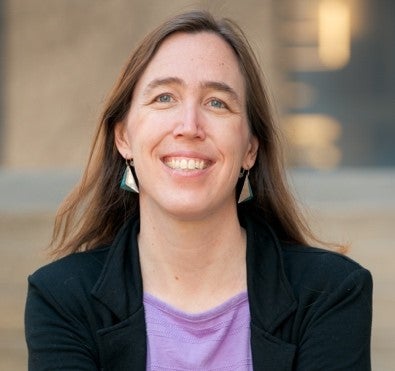 Dr. Jessica Bickel (Co-PI) is an Associate Professor in the Physics Department at CSU. Following the completion of her Ph.D. at the University of Michigan, Dr. Bickel worked as a postdoctoral researcher at the University of Hamburg (Germany) and Mount Holyoke College (Massachusetts). Dr. Bickel’s research interests are in how to promote student learning in the classroom and in nanoscale surfaces and interfaces where she is interested in how the arrangement of atoms at a surface affects how new atoms incorporate into the surface. This is applicable in organic electronic devices as a method to crystallize the organic material and thus increase the conductivity within the material to make it more competitive with traditional silicon devices. Since joining CSU in 2014 she has advised more than 20 laboratory students (~90% undergraduate, ~50% female) and has 5 publications and 1 manuscript in preparation with undergraduate co-authors.
Dr. Jessica Bickel (Co-PI) is an Associate Professor in the Physics Department at CSU. Following the completion of her Ph.D. at the University of Michigan, Dr. Bickel worked as a postdoctoral researcher at the University of Hamburg (Germany) and Mount Holyoke College (Massachusetts). Dr. Bickel’s research interests are in how to promote student learning in the classroom and in nanoscale surfaces and interfaces where she is interested in how the arrangement of atoms at a surface affects how new atoms incorporate into the surface. This is applicable in organic electronic devices as a method to crystallize the organic material and thus increase the conductivity within the material to make it more competitive with traditional silicon devices. Since joining CSU in 2014 she has advised more than 20 laboratory students (~90% undergraduate, ~50% female) and has 5 publications and 1 manuscript in preparation with undergraduate co-authors.
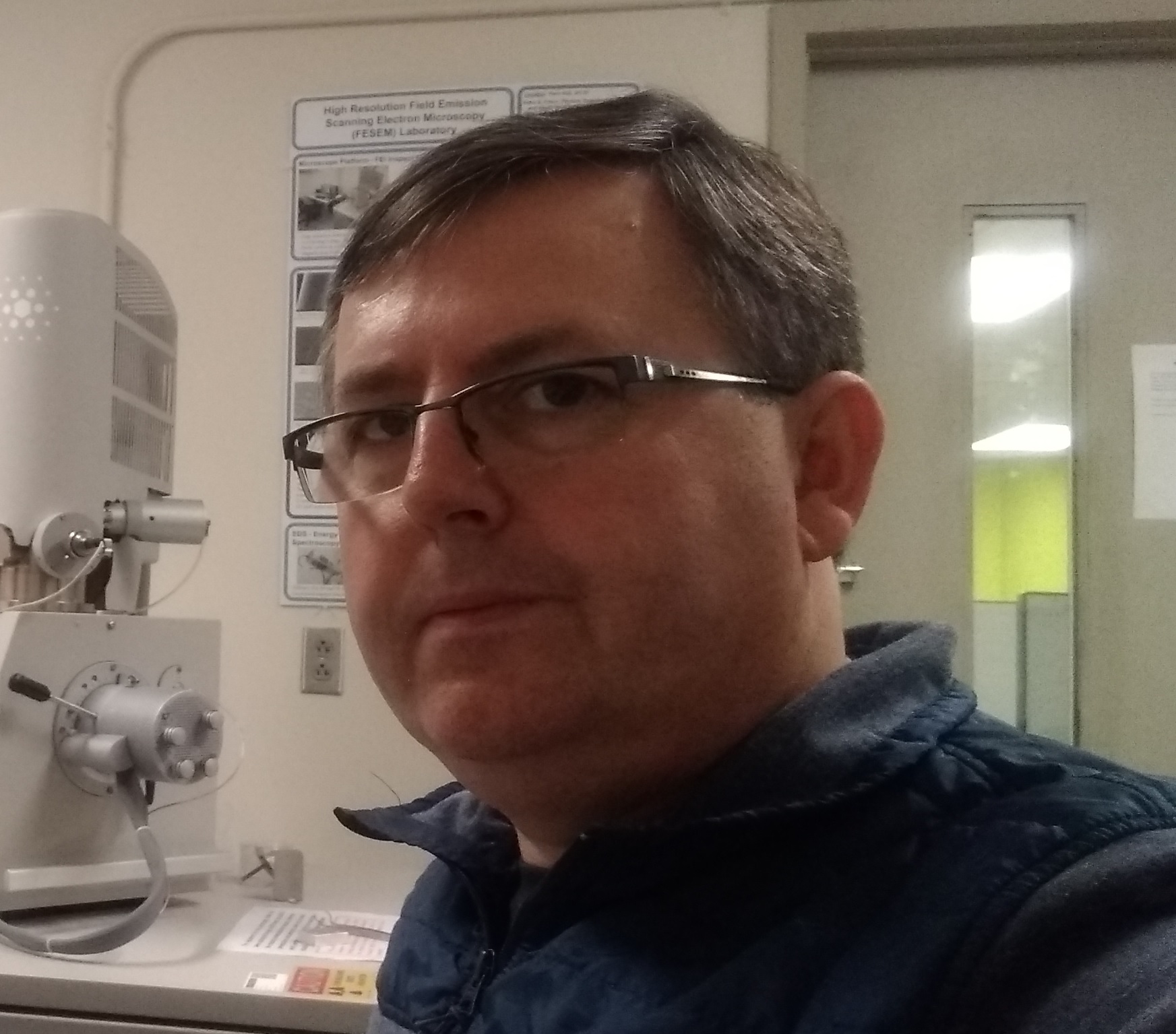 Dr. Petru S. Fodor joined CSU in 2006 and is currently a Professor and Chair in the Department of Physics. His research is focused on applied physics with projects ranging from the use of self-assembly methods for the fabrication of metal-semiconductor heterostructures and magnetic arrays to the design and characterization of microfluidic components. His interest in applied physics extends to his classes, where he has developed courses in optoelectronics, applied solid-state physics, and energy and environmental physics. He has also been involved with various high school teacher education and curriculum review programs.
Dr. Petru S. Fodor joined CSU in 2006 and is currently a Professor and Chair in the Department of Physics. His research is focused on applied physics with projects ranging from the use of self-assembly methods for the fabrication of metal-semiconductor heterostructures and magnetic arrays to the design and characterization of microfluidic components. His interest in applied physics extends to his classes, where he has developed courses in optoelectronics, applied solid-state physics, and energy and environmental physics. He has also been involved with various high school teacher education and curriculum review programs.
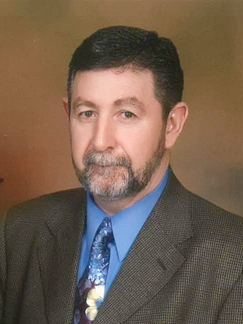 Dr. Jorge Gatica is a Professor and Graduate Program Director in the Department of Chemical Engineering at Cleveland State University. With expertise in Reaction Engineering, his current research interests center on waste management for sustainable living environments, energy from renewable resources, and the connection between metabolism and neurological disorders. He teaches a wide spectrum of classes ranging from introductory computer programming to capstone sequences and graduate-level classes.
Dr. Jorge Gatica is a Professor and Graduate Program Director in the Department of Chemical Engineering at Cleveland State University. With expertise in Reaction Engineering, his current research interests center on waste management for sustainable living environments, energy from renewable resources, and the connection between metabolism and neurological disorders. He teaches a wide spectrum of classes ranging from introductory computer programming to capstone sequences and graduate-level classes.
As a mentor for undergraduate minority and high-school students, Dr. Gatica is a partner with Esperanza (NE Ohio non-profit organization advocating to the advancement and education of Hispanics), currently supports the Education Area Team for the Hispanic Roundtable of Greater Cleveland, and actively interacts with the Society of Hispanic Professional Engineers (SHPE). Dr. Gatica is currently the Co-PI for the NIH-sponsored “Bridges to Baccalaureate Research,” training program aimed at diversifying STEM2 careers by streamlining student transition, and ensuring their success as they move from Associate Degree Programs (Cuyahoga Community College) to Bachelor and Graduate Programs (Cleveland State University).
Since joining CSU, more than fifty (50) students have graduated under Dr. Gatica’s supervision.
 Dr. Nolan Holland has been a member of the Chemical & Biomedical Engineering faculty since 2004 and is currently the department chair. His formal education is in Polymer Science and Engineering and his research at CSU is in the area of protein-based materials, particularly for biomedical applications.
Dr. Nolan Holland has been a member of the Chemical & Biomedical Engineering faculty since 2004 and is currently the department chair. His formal education is in Polymer Science and Engineering and his research at CSU is in the area of protein-based materials, particularly for biomedical applications.
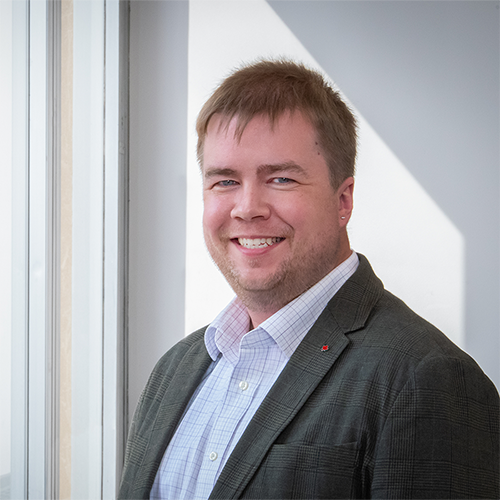 Michael J. A. Hore is the Warren E. Rupp Associate Professor in the Department of Macromolecular Science and Engineering at Case Western Reserve University. He received his BS degree in Physics/Mathematics, and later his MS degree in Physics, from The University of Memphis. In 2012, he received his Ph.D. in Materials Science & Engineering from the University of Pennsylvania, followed by a National Research Council (NRC) Postdoctoral Fellowship to perform neutron scattering measurements at the NIST Center for Neutron Research (NCNR) in Gaithersburg, MD. Recently, he has been recognized with several teaching awards, an NSF CAREER Award, the DPOLY/UKPPG Lecture Exchange Award from the American Physical Society (APS), and was named a 2018 PMSE Young Investigator by the American Chemical Society (ACS). His research group combines theory, computer simulations, and experiments to study grafted polymers, molecular bottlebrushes, thermoresponsive materials, and nanoparticle transport.
Michael J. A. Hore is the Warren E. Rupp Associate Professor in the Department of Macromolecular Science and Engineering at Case Western Reserve University. He received his BS degree in Physics/Mathematics, and later his MS degree in Physics, from The University of Memphis. In 2012, he received his Ph.D. in Materials Science & Engineering from the University of Pennsylvania, followed by a National Research Council (NRC) Postdoctoral Fellowship to perform neutron scattering measurements at the NIST Center for Neutron Research (NCNR) in Gaithersburg, MD. Recently, he has been recognized with several teaching awards, an NSF CAREER Award, the DPOLY/UKPPG Lecture Exchange Award from the American Physical Society (APS), and was named a 2018 PMSE Young Investigator by the American Chemical Society (ACS). His research group combines theory, computer simulations, and experiments to study grafted polymers, molecular bottlebrushes, thermoresponsive materials, and nanoparticle transport.
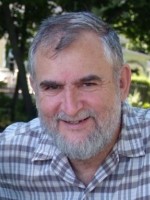 Dr. Miron Kaufman is a Professor in the Department of Physics at CSU. His research in statistical physics and fluid mechanics covers topics in superconductivity, magnetism, liquids, polymers, hierarchical lattices, and mixing in microchannel flows. Several of the undergraduate students who have worked with Dr. Kaufman on research projects have gone on to Ph.D. programs such as the University of California at Berkeley and Johns Hopkins.
Dr. Miron Kaufman is a Professor in the Department of Physics at CSU. His research in statistical physics and fluid mechanics covers topics in superconductivity, magnetism, liquids, polymers, hierarchical lattices, and mixing in microchannel flows. Several of the undergraduate students who have worked with Dr. Kaufman on research projects have gone on to Ph.D. programs such as the University of California at Berkeley and Johns Hopkins.
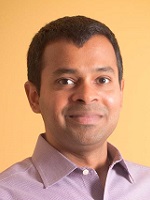 Dr. Chandra Kothapalli is a Professor in the Chemical & Biomedical Engineering department at CSU. Undergraduate and graduate students in his lab investigate a wide range of topics including, cell and tissue biomechanics, stem cell applications in regenerative medicine, cancer cell biology, microfluidics, and 3D bioprinting. His research is funded by grants from federal agencies (NSF, NIH, USDA) and CSU internal funds.
Dr. Chandra Kothapalli is a Professor in the Chemical & Biomedical Engineering department at CSU. Undergraduate and graduate students in his lab investigate a wide range of topics including, cell and tissue biomechanics, stem cell applications in regenerative medicine, cancer cell biology, microfluidics, and 3D bioprinting. His research is funded by grants from federal agencies (NSF, NIH, USDA) and CSU internal funds.
 Dr. Andrew Resnick is a Professor in the department of physics at CSU. He applies optical techniques to the study of soft matter systems, focusing on the primary cilium, a biological flow sensor. Dr. Resnick uses optical traps and fluid flow to better understand how ciliated cells within your kidneys regulate salt and water balance, and how changes in flow through a ‘healthy’ tubule can promote the progression of autosomal dominant polycystic kidney disease. He is now studying the detailed mechanical properties of the primary cilium and how the cilium base could mechanistically act as a gate to distinguish between mechanical stimulation of the cilium through flow-induced bending and chemical stimulation of membrane-inserted receptors. Dr. Resnick’s long-term goal is to bridge the gap between Biology and Physics to better understand how: 1) solute and water absorption along the nephron is regulated by fluid flow; 2) stimulation of the primary cilium connects with intact tissue response; and 3) these processes contribute to homeostatic kidney function and injury recovery.
Dr. Andrew Resnick is a Professor in the department of physics at CSU. He applies optical techniques to the study of soft matter systems, focusing on the primary cilium, a biological flow sensor. Dr. Resnick uses optical traps and fluid flow to better understand how ciliated cells within your kidneys regulate salt and water balance, and how changes in flow through a ‘healthy’ tubule can promote the progression of autosomal dominant polycystic kidney disease. He is now studying the detailed mechanical properties of the primary cilium and how the cilium base could mechanistically act as a gate to distinguish between mechanical stimulation of the cilium through flow-induced bending and chemical stimulation of membrane-inserted receptors. Dr. Resnick’s long-term goal is to bridge the gap between Biology and Physics to better understand how: 1) solute and water absorption along the nephron is regulated by fluid flow; 2) stimulation of the primary cilium connects with intact tissue response; and 3) these processes contribute to homeostatic kidney function and injury recovery.
 Dr. Shawn Ryan is an Associate Professor in the Department of Mathematics and Statistics at Cleveland State University. His current research focuses on the modeling, analysis, and simulations of problems in collective motion in biology, material science, and physics; with specific topics involving bacterial contamination in food processes with D. Munther (Math) and C. Kothapalli (Chem E.), math modeling with applications to medicine with O. Baloglu (CCF), social insect behavior with B. Karamched (Florida St) and Synthetic Janus Particles with C. Wirth (CWRU). He is the co-Director/founder of the CSU Research Center for Applied Data Analysis and Modeling (ADAM) focused on high-performance computing and interdisciplinary projects. He supervised 57 undergraduates in applied math research with 14 publications (13 have a student first author). Many students have gone on to graduate programs (e.g. U. Chicago, Mt Sinai Biology, Colorado State, John Hopkins, Michigan State, Penn State).
Dr. Shawn Ryan is an Associate Professor in the Department of Mathematics and Statistics at Cleveland State University. His current research focuses on the modeling, analysis, and simulations of problems in collective motion in biology, material science, and physics; with specific topics involving bacterial contamination in food processes with D. Munther (Math) and C. Kothapalli (Chem E.), math modeling with applications to medicine with O. Baloglu (CCF), social insect behavior with B. Karamched (Florida St) and Synthetic Janus Particles with C. Wirth (CWRU). He is the co-Director/founder of the CSU Research Center for Applied Data Analysis and Modeling (ADAM) focused on high-performance computing and interdisciplinary projects. He supervised 57 undergraduates in applied math research with 14 publications (13 have a student first author). Many students have gone on to graduate programs (e.g. U. Chicago, Mt Sinai Biology, Colorado State, John Hopkins, Michigan State, Penn State).
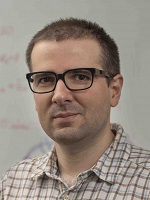 Dr. Sebastian Sensale Rodriguez is an Assistant Professor in the Department of Physics. Before joining CSU, he was a postdoctoral scholar at Duke University, where he developed computational models to better understand the behavior of dynamic DNA origami structures at the nanoscale. He received his Ph.D. in Bioengineering from the University of Notre Dame, where his work focused on the development of analytical and computational methods for modeling biomolecules and electrokinetic processes for biosensing applications. Dr. Sensale's research expertise is in the computational and mathematical modeling of biological systems at the micro- and nano-scales. His overarching research goal is to advance our understanding of these systems in order to create novel tools for early disease detection. His research projects have included the development of theoretical models for the prediction of resistive signals in nanopore sensors, the development of coarse-grained models for the prediction of enzyme-driven microtubule detyrosination, and the development of atomistic computational techniques to study THz vibrations of biomolecules. Dr. Sensale is an active member of the American Physical Society (APS) and is currently co-organizing the 2023 Fall Meeting of the APS's Eastern Great Lakes Section (EGLS), which will be held on October 20th and 21st at Cleveland State University. This meeting will bring together physicists, engineers, and other scientists from industry, government, and academia to discuss the most recent advances in fundamental and applied research.
Dr. Sebastian Sensale Rodriguez is an Assistant Professor in the Department of Physics. Before joining CSU, he was a postdoctoral scholar at Duke University, where he developed computational models to better understand the behavior of dynamic DNA origami structures at the nanoscale. He received his Ph.D. in Bioengineering from the University of Notre Dame, where his work focused on the development of analytical and computational methods for modeling biomolecules and electrokinetic processes for biosensing applications. Dr. Sensale's research expertise is in the computational and mathematical modeling of biological systems at the micro- and nano-scales. His overarching research goal is to advance our understanding of these systems in order to create novel tools for early disease detection. His research projects have included the development of theoretical models for the prediction of resistive signals in nanopore sensors, the development of coarse-grained models for the prediction of enzyme-driven microtubule detyrosination, and the development of atomistic computational techniques to study THz vibrations of biomolecules. Dr. Sensale is an active member of the American Physical Society (APS) and is currently co-organizing the 2023 Fall Meeting of the APS's Eastern Great Lakes Section (EGLS), which will be held on October 20th and 21st at Cleveland State University. This meeting will bring together physicists, engineers, and other scientists from industry, government, and academia to discuss the most recent advances in fundamental and applied research.
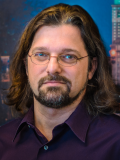 Dr. Kiril A Streletzky (PI) is a Professor in the department of physics at CSU. His research focuses on studying fundamental properties and applications of multiscale, multistate, and multiphase complex fluid systems such as bio-polymer mixtures, protein solutions, smart polymeric nanoparticles – microgels, protein-based micelles, surfactant micelles, and liposomes. Dr. Streletzky's research program focuses on experimentally probing the structure, dynamics, composition, and critical behavior of these systems with light scattering, X-ray scattering, and electron imaging techniques. He is also interested in developing specific applications for these systems (such as targeted drug delivery, controlled encapsulation and release of biologically active molecules, development of bio-sensors, and shear-thinning dispersions, extraction of biological proteins, etc). Dr. Streletzky has received more than $1093k in extramural (e.g NSF, Research Corporation, American Institute of Physics) and internal (CSU) funding to mentor 51 undergraduates (~50% female) in 9 year-long theses, one McNair project (URM), 60 independent studies, and 61 summer research projects. The results were presented nationally and internationally with more than 81 published conference abstracts with 40 different undergraduates and led to 13 publications (+2 manuscripts) with 21 undergrad coauthors. At least 20 students continued into research (e.g. PhD candidates at Caltech, Duke, Ohio State, UMass Boston, Oregon State; postdocs at University of Florida and University of Pittsburgh; contractors at Johnson Space Center and NASA Glenn Research Center; medical physicist at Presbyterian/Weill Cornell Hospital; US Census Bureau statistician; an assistant professor at West Virginia School of Medicine.)
Dr. Kiril A Streletzky (PI) is a Professor in the department of physics at CSU. His research focuses on studying fundamental properties and applications of multiscale, multistate, and multiphase complex fluid systems such as bio-polymer mixtures, protein solutions, smart polymeric nanoparticles – microgels, protein-based micelles, surfactant micelles, and liposomes. Dr. Streletzky's research program focuses on experimentally probing the structure, dynamics, composition, and critical behavior of these systems with light scattering, X-ray scattering, and electron imaging techniques. He is also interested in developing specific applications for these systems (such as targeted drug delivery, controlled encapsulation and release of biologically active molecules, development of bio-sensors, and shear-thinning dispersions, extraction of biological proteins, etc). Dr. Streletzky has received more than $1093k in extramural (e.g NSF, Research Corporation, American Institute of Physics) and internal (CSU) funding to mentor 51 undergraduates (~50% female) in 9 year-long theses, one McNair project (URM), 60 independent studies, and 61 summer research projects. The results were presented nationally and internationally with more than 81 published conference abstracts with 40 different undergraduates and led to 13 publications (+2 manuscripts) with 21 undergrad coauthors. At least 20 students continued into research (e.g. PhD candidates at Caltech, Duke, Ohio State, UMass Boston, Oregon State; postdocs at University of Florida and University of Pittsburgh; contractors at Johnson Space Center and NASA Glenn Research Center; medical physicist at Presbyterian/Weill Cornell Hospital; US Census Bureau statistician; an assistant professor at West Virginia School of Medicine.)

